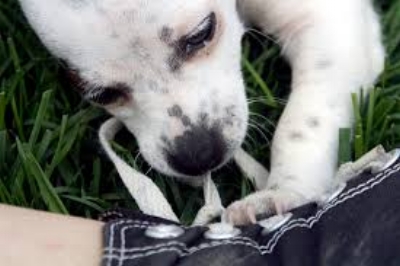You work hard to make sure your furry family members are safe and secure. But aside from securing leashes and making sure the fences are strong, one safety measure that you shouldn’t overlook is getting your pet licensed and/or microchipped. Both of these methods will help you recover your furry friend more quickly should you ever be separated.
Licensing in Salt Lake County
Before your furry friend turns five months old or within 30 days of bringing him home, whichever happens first, you’re required to apply for a license if you live in Salt Lake County. Most cities and unincorporated areas of Salt Lake County require all dogs and cats to be licensed, and three different areas–Herriman, Holladay and unincorporated county areas–require ferrets to be licensed as well. The only requirement to be licensed is that your pet should have a current rabies vaccination. Some cities give you a discount on the registration fee if you provide proof of spay or neutering, too.
You can license your pet in person at a local shelter, through the mail or online. Find out how at the Salt Lake County Animal Services site. Whichever method you choose, include proof of the current rabies vaccination, sterilization (if applicable) and the licensing fee.
Not only will licensing your pet help ensure a quicker reunion with your pet, it also ensures that your pet gets emergency veterinary care should an animal control officer find him/her injured. So it can literally mean the difference between life and death.
Licensing your pet helps give you peace of mind, increasing your chances of a reunion should he/she become lost. Photo courtesy of MLife.
Microchipping Your Pet
While licensing your pet improves your chances of a reunion, having a small microchip placed under your pet’s skin increases that chance more than 200% than licensing alone. This chip is no bigger than a grain of rice and is usually embedded in the skin in the back of the neck by your veterinarian or a shelter worker. Contact information for you is embedded in the chip, so if your pet becomes lost the shelter can scan the chip and call you to come get your pet.
Microchipping your pet increases your chance or reuniting with him/her more than 200% than licensing alone. Photo courtesy of Cherry Ridge Veterinary Clinic.
Microchipping your pet increases your chance or reuniting with
him/her more than 200% than licensing alone. It is very affordable – it’s a one-time cost of approximately $40-50. That’s about the cost of 1-2 months of pet food–and it’s a small investment on your peace of mind.
Getting your pet licensed and/or microchipped takes a little time and a little money, but it is completely worth the investment when you feel that relief and happiness of being reunited with your pet.







